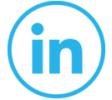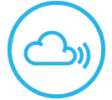Linda Elsegood: Welcome to the LDN radio show brought to you by the LDN Research Trust I'm your host, Linda Elsegood. I have an exciting lineup of guest speakers who are LDN experts in their field. We will be discussing low-dose naltrexone and its many uses in autoimmune diseases, cancers, etc. Thank you for joining us.
Today I'm joined by Tracey from the US who initially took LDN for Hashimoto's thyroiditis. Thank you for joining us today, Tracey.
Tracey: Thank you for having me.
Linda Elsegood: So could you tell us how easy was it to get your initial diagnosis of Hashimoto's?
Tracey: It actually was not easy. After I had my second child I could just tell, even though I had a child, the fatigue was extreme, hair falling out, inability to lose the baby weight, and just a lot of different things. So I went to a primary care. I did get tested and they did say I was hypothyroid, but it took until 3 years later until I went to a naturopath for them to actually test, which it's kind of crazy, because it's really just one test. They tested my antibodies and realized I had Hashimoto's. Because I got that diagnosis with the naturopath, I stuck with that office, because they seemed to be working better with me.
Linda Elsegood: Okay, so what was the length of time it took from when you had your child to having the actual diagnosis?
Tracey: I was diagnosed with hypothyroidism originally within six months, and they gave me Synthroid, which really did not help very much. I was still exhausted. Maybe it helped me about 15%, and I just kind of struggled along with that for about 3 years. I went to an endocrinologist. Same thing. They just said just stay on Synthroid. And finally, I moved, and I went to a naturopath. They did the test, realized it was Hashimoto's, and then also switched me from Synthroid to natural desiccated thyroid, which changed my life. It really did. I felt like I wasn't hypothyroid or Hashimoto's anymore. I still struggled a little later with some fatigue, but it helped me about 80%. Then, I guess it was around 9 years ago, my naturopath said there had been studies - the office really kept up with trends and studies - and they really researched a lot, which is another reason I like going to a naturopath; and they told me about low-dose naltrexone, LDN. I had not heard of it, and most people at that time, because it's a while ago, had not heard of it. He gave me some research. I did some of my own research, and I started taking it. I started taking it about five years into my hypothyroidism, so it was about a year after I got diagnosed with Hashimoto's. And I titered up, and it made a big difference within literally just two months. I know they say it can take longer, but for me I noticed within two months.
Linda Elsegood: So it was like you say, a long while ago now, but did you have any side effects? Can you remember when you started?
Tracey: Well I know some people take tiny tiny amounts and they titer up really slowly. I split one 4.5 mg pill into four, so I took a quarter of that for three or four days, and then a half for three or four days. I really didn't have any side effects. I think the first night I had a little insomnia, and the first three days some unique dreams. And that's really it. I was one of the lucky ones that I just didn't have too many side effects at all. I had energy within one or two weeks. I felt extra energy in the day, which was great, because fatigue was one of my bigger problems. So I never ever had really any bad side effects.
Linda Elsegood: Wow. So, comparing your life now to how it was before you started LDN, how would you describe it?
Tracey: It's just much better. Fatigue, as a lot of people know, can really be debilitating. It can just affect your whole day. I used to be exhausted from about one o'clock in the afternoon until five, and I would be in the middle of working, or when I was younger taking care of my kids and working, so I had to stop for three or four hours and sit down or lay down. I don't have to do that anymore. I've just been staying on the 4.5 all these years. Unfortunately, last year I got diagnosed with seronegative RA. At least that's what we think it is, and so I am looking at increasing that to the 6 mg because there's been studies since nine years ago, of using it for RA in a slightly higher dose. So I'm just starting to play around with that.
Linda Elsegood: And how's it making you feel increasing the dose?
Tracey: I just started the 6 mg about two weeks ago. I don't notice a huge difference, but I do know my doctor told me that sometimes to change RA with anti-inflammatory reasons, it could take a month or two. So I'm just gonna keep going with that, because there are some other people with RA who I talked to that are doing really well on that dose. I only take it at night. I know some people dose twice a day, but I feel like my body needs the 18 hours to cycle through the whole LDN cycle.
Linda Elsegood: Okay, so are you following a regime from your naturopath, on diet and supplements as well?
Tracey: Yes, I've been taking so many supplements for years, probably the typical ones that most people take, you know the turmeric and black seed oil, B vitamins, D, C, all of those. I also take resveratrol and glutathione just for liver cleansing, and I do I did the ALP diet when I got diagnosed with the seronegative RA. I started the AIP diet, and after the 30 day elimination, I moved into basically a paleo diet. No sugars, processed food, stay away from gluten. And that definitely helps me, about 20 to 25 percent the diet alone. I feel a combination between LDN, my supplements, my diet and I do take one other mild RA drug, first line drug hydroxychloroquine, so maybe between all of them they all work around 20 percent. I can get back to my normal self.
Linda Elsegood: How did you know you've got RA? Were you getting lots of joint pain?
Tracey: Yes, it kind of came out of the blue. I do know that people that have one auto inflammatory disease are prone to get others. It really was out of the blue. One day for years, working out five, six times a week, hiking, yoga, etc, at the gym. Then I started to feel knee pain, and I thought it was from running too much, so I stopped running. And the knee pain didn't go away. Then I started to get wrist pain, and then thumb pain, elbow pain, shoulder pain, and that's when I knew this is not from exercising. And I was in denial for a month or two, and it was pretty excruciating, I'll say. It escalated very quickly, and from what I've heard from a lot of other people, that's actually common, unfortunately. So I started my process, going to my primary care, and they sent me to different doctors, and I finally landed at a rheumatologist. I'm one of those people where my blood work was perfect, my RA and lupus and all of those, ANA, were all negative. The only thing I had was high inflammatory markers, which show that you're inflamed and in pain, so you don't look like a crazy person. They just started examining my joints, and they call that seronegative RA. Some doctors call that inflammatory arthritis, with the hopes that it will go away, but next month will be a year or so.
Linda Elsegood: That's a long time isn't it?
Tracey: Yeah; I don't I don't think it's going away.
Linda Elsegood: Who is guiding you with your LDN? Your naturopath still?
Tracey: The naturopath is still guiding me with my LDN and my supplements. Rheumatologists generally go right away to medication, pharmaceuticals, which I understand, but I take all my test results and all of the suggestions from my rheumatologist, and I go to my naturopath, and we discuss it, because he'll spend more time with me. We kind of agree on what the next step will be trying to take things conservatively. So that's how I landed on hydroxychloroquine, but also the diet and the supplements. Since nine ten years ago, there have now been studies for RA where they're using it in slightly higher doses, all the way up to 9 mg actually. He sent me all studies, and I thought I would go ahead and try that, and very slowly titer up. I like to do one thing at a time so I can see what's working.
Linda Elsegood: Yes, it gets a bit confusing doesn't it, if you start too many things at the same time.
Tracey: Right. I had started that hydroxychloroquine and thankfully had zero side effects, and I let that work a few months, and then then I started increasing the LDN. I've only been doing that about 12 days, so we'll see. Hopefully, in another month or two, because I think it will be gradual - I don't think I'll just wake up with no pain. I think it will be more gradual, looking at my pain level over a whole month versus just day to day.
Linda Elsegood: Yes, well the good news is I know of two rheumatologists that will actually prescribe LDN as a first-line treatment. The LDN Research Trust has been going over 18 years now, and the message is spreading well. It's not just naturopaths anymore. Conventional medicine doctors who find that their patients need extra help, and they've tried everything, and there isn't anything extra. Many of these doctors have looked outside the box to see what else there is out there that they can prescribe to help their patients. I know of neurologists, dermatologists, gastroenterologists, a lot of consultant doctors, who are interested in using LDN. When I started LDN in 2003 there weren't that many doctors prepared to even look at LDN. There were pockets of doctors all over. But it's a lot easier now for people to get LDN than it ever was before. Are you still with the same naturopath that you…?
Tracey: Yes I'm with the same naturopath for, I believe it's 10 or 11 years already. People can still see a rheumatologist or endocrinologist or whatever, but it's really nice to also have a functional doctor or naturopath to run things by them as well, or to find a doctor that mixes alternative, western, eastern medicine, and looks at all sides. A lot of the drugs for RA, multiple sclerosis, etc, Crohn's are pretty serious drugs with hefty side effects. I like that you know rheumatologists that will start with LDN first instead of running to methotrexate or these other low-dose chemo drugs.
Linda Elsegood: Methotrexate, I know there are people who have said it's helped really well initially, but as you were saying, the side effects are high. They're very toxic drugs.
Tracey: Very much even at low dose.
Linda Elsegood: If LDN if it's not going to do you any good it's not going to do any harm. It's not a toxic drug. It's safe to try without running the risks of getting awful side effects. So, what would you say to people who are skeptical about trying LDN, because there are still people out there who like alternative therapies and LDN is still a drug, and some people are like no, I don't want to take drugs, any drugs, doesn't matter that it's a low dose and it's not harmful, it's still a drug. What would you say to people from your experience about giving LDN a try?
Tracey: Well, I had an excellent experience basically. No side effects. But I do know that some people need to titer up more slowly, which they can do. I just feel like the side effect profile for LDN is so minimal, and from what I know, and I have read quite a bit of studies, nothing, no side effects are permanent, and it's such a low percentage of people that continue on and the side effects don't go away for them. It has such a high success rate versus side effects. I just feel that they should research that, and I know occasionally somebody will say naltrexone, you know they'll look it up right away and they don't understand low dose naltrexone is different than naltrexone. Everybody absolutely has to know the two different situations, and just read the studies. I haven't found one study that says really anything negative. Like you said, the worst thing that will happen is three months later you find it didn't work for you. It helped me greatly with Hashimoto's, and it basically changed my daily life, so I'm hoping that will also change my RA effects as well.
Linda Elsegood: Well amazing story, and thank you very much for having shared it with us today.
Tracey: You are very welcome.
Linda Elsegood: Any questions or comments you may have please email me at Contact@ldnresearchtrust.org I look forward to hearing from you. Thank you for joining us today. We really appreciated your company. Until next time, stay safe and keep well.







